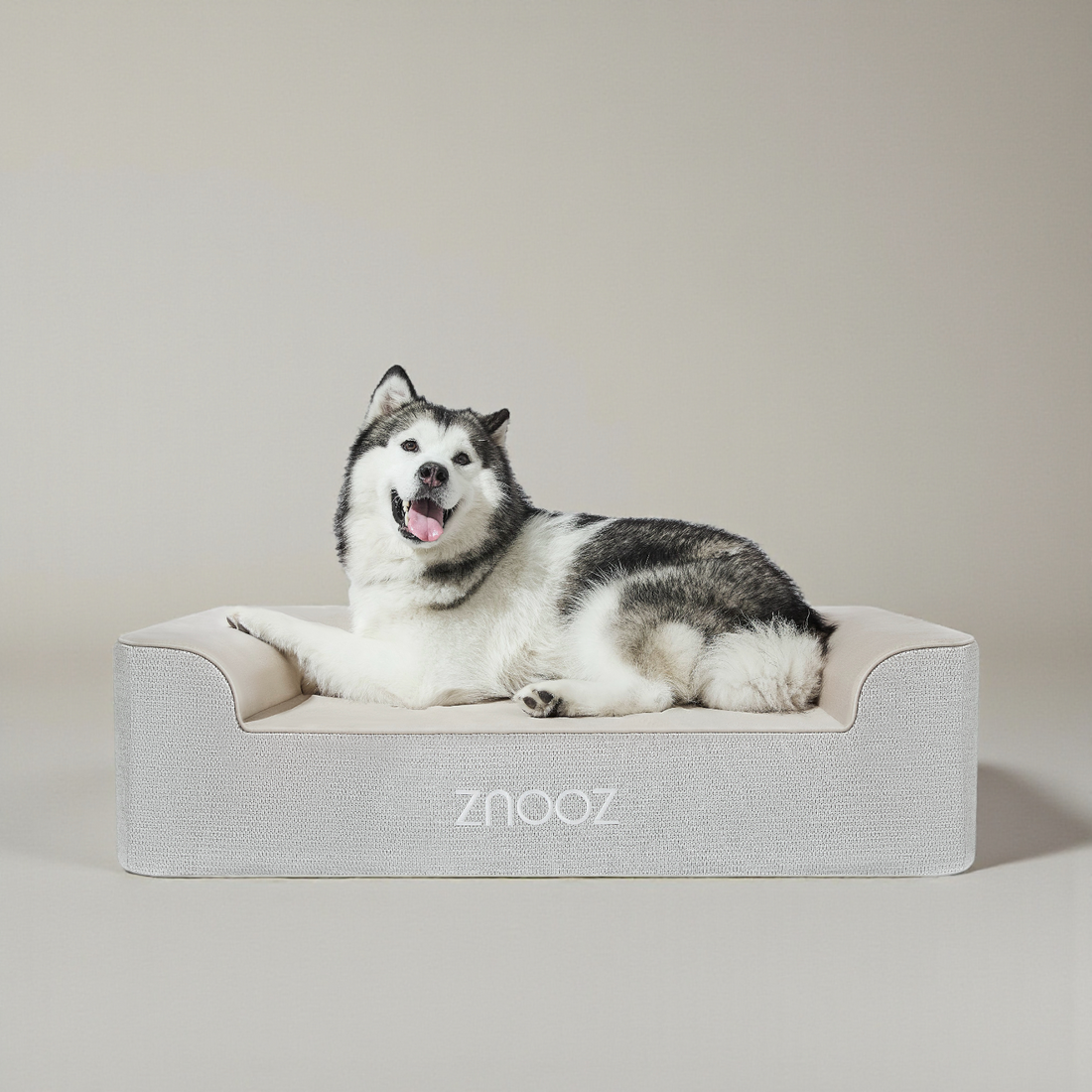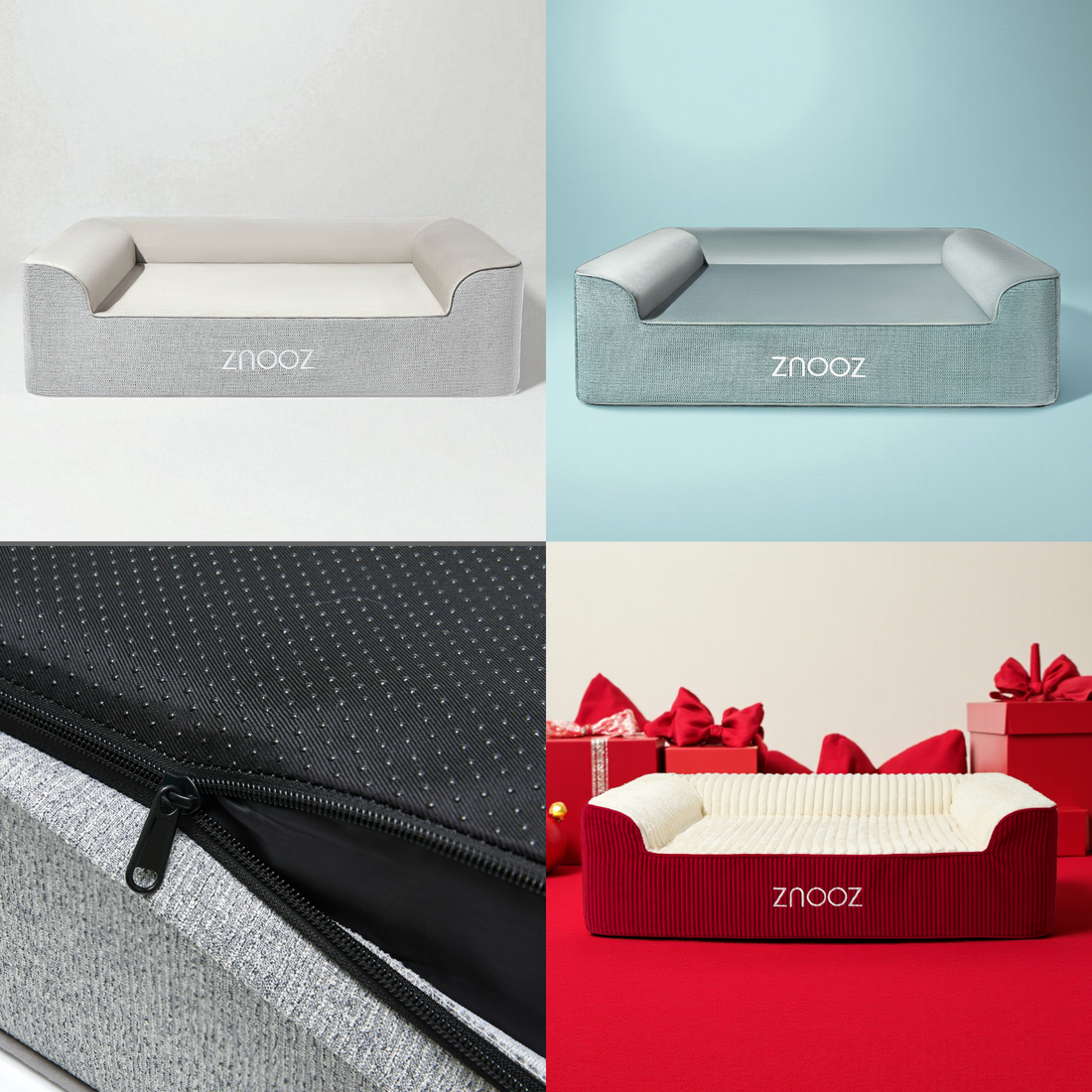If you’re a pet parent to a large breed dog, you know that comfort and joint support are essential. Big dogs are more prone to joint issues like arthritis, hip dysplasia, and stiffness, which makes the right orthopedic dog bed an important investment. To help you decide, here are answers to the most common questions about finding the perfect orthopedic bed for large dogs.
What is an orthopedic dog bed and why is it important for large breeds?
An orthopedic dog bed is designed to provide extra joint and muscle support using materials like memory foam or high-density foam. Unlike standard beds or cushions, orthopedic beds:
-
Distribute weight evenly to reduce pressure on joints
-
Improve sleep quality by supporting natural alignment
-
Help dogs with arthritis or hip discomfort feel more at ease
-
Provide durable, long-lasting comfort for heavier builds
Large and giant breeds such as Labradors, German Shepherds, Rottweilers, and Great Danes can greatly benefit from an orthopedic design.
What size orthopedic dog bed should I get for my big dog?
Getting the right size is critical. Your dog should be able to stretch out fully without legs or head hanging off the sides. For accuracy:
-
Measure your dog from nose to tail when lying down.
-
Add an additional 6–12 inches to ensure extra space.
-
Match this measurement to the bed’s size chart.
Large breeds often need a larger orthopedic dog beds, while giant breeds may need XXL or jumbo options.
What materials should I look for?
Not all orthopedic beds are made equal. Look for:
-
High-density foam: At least 4–7 inches thick so it doesn’t flatten under your dog’s weight
-
Bolsters or headrests: For extra neck and back support
-
Washable covers: Essential for easy cleaning of dirt, hair, and spills
-
Durable fabric: Resistant to tearing from claws and repeated use
-
Non-slip base: Prevents sliding on hardwood or tile flooring
Should foam thickness be a big factor in my choice?
Yes. Foam thickness matters even more for large breeds since they weigh more. A thin bed will compress quickly and won’t protect joints. Look for an orthopedic bed with multi-layer memory foam support for lasting durability.
Do older dogs need orthopedic dog beds?
Yes, senior large dogs benefit the most. As they age, conditions like arthritis and stiffness can impact mobility. An orthopedic bed makes it easier for them to lie down, rest deeply, and get back up without additional strain.
How should I clean and maintain an orthopedic dog bed?
A good orthopedic bed should be easy to maintain, especially for large dogs that shed or drool. Choose beds with:
-
Removable, machine-washable covers
-
Waterproof or water-resistant liners
-
Sturdy zippers that can withstand frequent washing
Rotating the foam or flipping it occasionally helps extend its lifespan.
How much should I budget for a quality orthopedic dog bed?
Expect to spend between $100 and $300+ depending on the size, foam quality, and added features. While budget-friendly beds exist, investing in a durable orthopedic option means better health support for your dog and fewer replacements over time.
Are there special orthopedic features for different needs?
Yes, many orthopedic beds cater to unique requirements:
-
Cooling gel beds: Best for hot climates or dogs that overheat easily
-
Low-profile beds: Ideal for older or arthritic dogs that struggle to climb
-
Bolstered designs: Great for anxious dogs who like a sense of security
-
Oversized beds: Specifically for giant breeds that need extra space and support
Conclusion
Choosing the best orthopedic dog bed for large breeds comes down to size, foam thickness, durability, and ease of cleaning. By investing in a supportive bed, you’ll protect your dog’s joints, improve their comfort, and give them the restful sleep they deserve. At ZNOOZ, we’re committed to helping pet parents make healthier, smarter choices—because every big dog deserves the perfect orthopedic bed.






